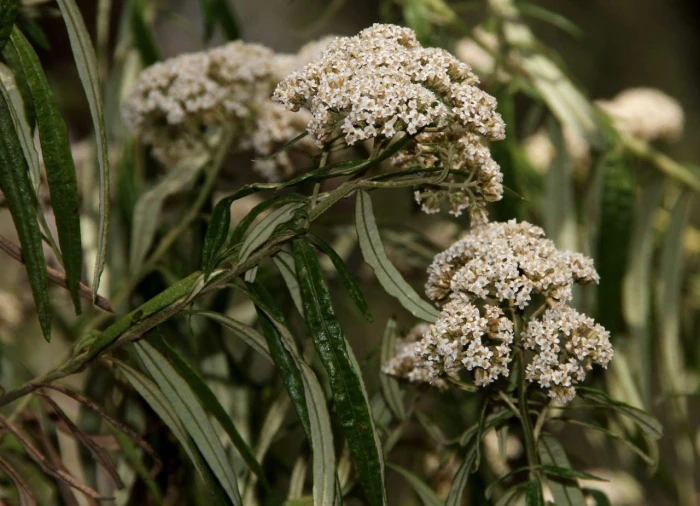Tree Everlasting
(Ozothamnus ferrugineus)
Tree Everlasting (Ozothamnus ferrugineus)
/
/

© Russell Best
CC BY 4.0
Image By:
© Russell Best
Recorded By:
Copyright:
CC BY 4.0
Copyright Notice:
Photo by: © Russell Best | License Type: CC BY 4.0 | License URL: http://creativecommons.org/licenses/by/4.0/ | Uploader: russellbest | Publisher: iNaturalist |





















Estimated Native Range
Climate Requirements for Coram, New York
| This Plant | Your Site | Plant Suitability for Your Location | ||
|---|---|---|---|---|
| • Precipitation | 8" - 96" | 43" | Aquatic | Aquatic |
| • High Temp. | 60°F - 100°F | 83°F | Your summer temperatures are normal for this plant. | Excellent |
| • Low Temp. | 26°F - 48°F | 23°F | Your winter temperatures may be too cold for this plant | Too cold |
This plant may not grow well at your location - your precipitation is too high.
Summary
Ozothamnus ferrugineus, commonly known as Tree Everlasting, is an aromatic, erect shrub or small tree native to a variety of habitats including coastal heathland, dry sclerophyll forests, and subalpine areas in southeastern Australia, encompassing New South Wales, Victoria, South Australia, and Tasmania. It typically grows to a height of 6-10 feet and has a woody stem with small, leathery leaves. The plant produces clusters of small, white, daisy-like flowers that resemble cauliflower heads, which are highly attractive to pollinators. Flowering occurs mainly in summer, and the plant is known for its ability to regenerate well after fire or disturbances, often being one of the first species to reappear.
Tree Everlasting is valued for its resilience and the ornamental quality of its flowers, which can add a unique texture to garden landscapes. It is used in native plant gardens, as a feature shrub in mixed borders, and for habitat restoration projects. This species prefers full sun to part shade and requires well-drained soil, tolerating a range of soil types from sandy to loamy. While it is drought-tolerant once established, it benefits from occasional watering during prolonged dry periods. There are no major disease or pest issues, but it can be sensitive to root rot if overwatered. Its aromatic foliage can also be used in floral arrangements.CC BY-SA 4.0
Tree Everlasting is valued for its resilience and the ornamental quality of its flowers, which can add a unique texture to garden landscapes. It is used in native plant gardens, as a feature shrub in mixed borders, and for habitat restoration projects. This species prefers full sun to part shade and requires well-drained soil, tolerating a range of soil types from sandy to loamy. While it is drought-tolerant once established, it benefits from occasional watering during prolonged dry periods. There are no major disease or pest issues, but it can be sensitive to root rot if overwatered. Its aromatic foliage can also be used in floral arrangements.CC BY-SA 4.0
Plant Description
- Plant Type: Shrub
- Height: 5-15 feet
- Width: 3-8 feet
- Growth Rate: Moderate
- Flower Color: White, Cream
- Flowering Season: Summer
- Leaf Retention: Evergreen
Growth Requirements
- Sun: Full Sun, Part Shade
- Water: Medium
- Drainage: Medium, Fast
Common Uses
Border Plant, Low Maintenance, Rock Garden, Showy Flowers
Natural Habitat
Native to coastal heathland, dry sclerophyll forests, and subalpine areas in southeastern Australia
Other Names
Common Names: Alpine Cottonwood
Scientific Names: Ozothamnus ferrugineus, Chrysocoma ferruginea, Eupatorium ferrugineum, Helichrysum dendroideum, Helichrysum ferrugineum, Helichrysum ferrugineum, Helichrysum ferrugineum, Helichrysum ferrugineum var. ferrugineum, Ozothamnus dendroideus
GBIF Accepted Name: Ozothamnus ferrugineus